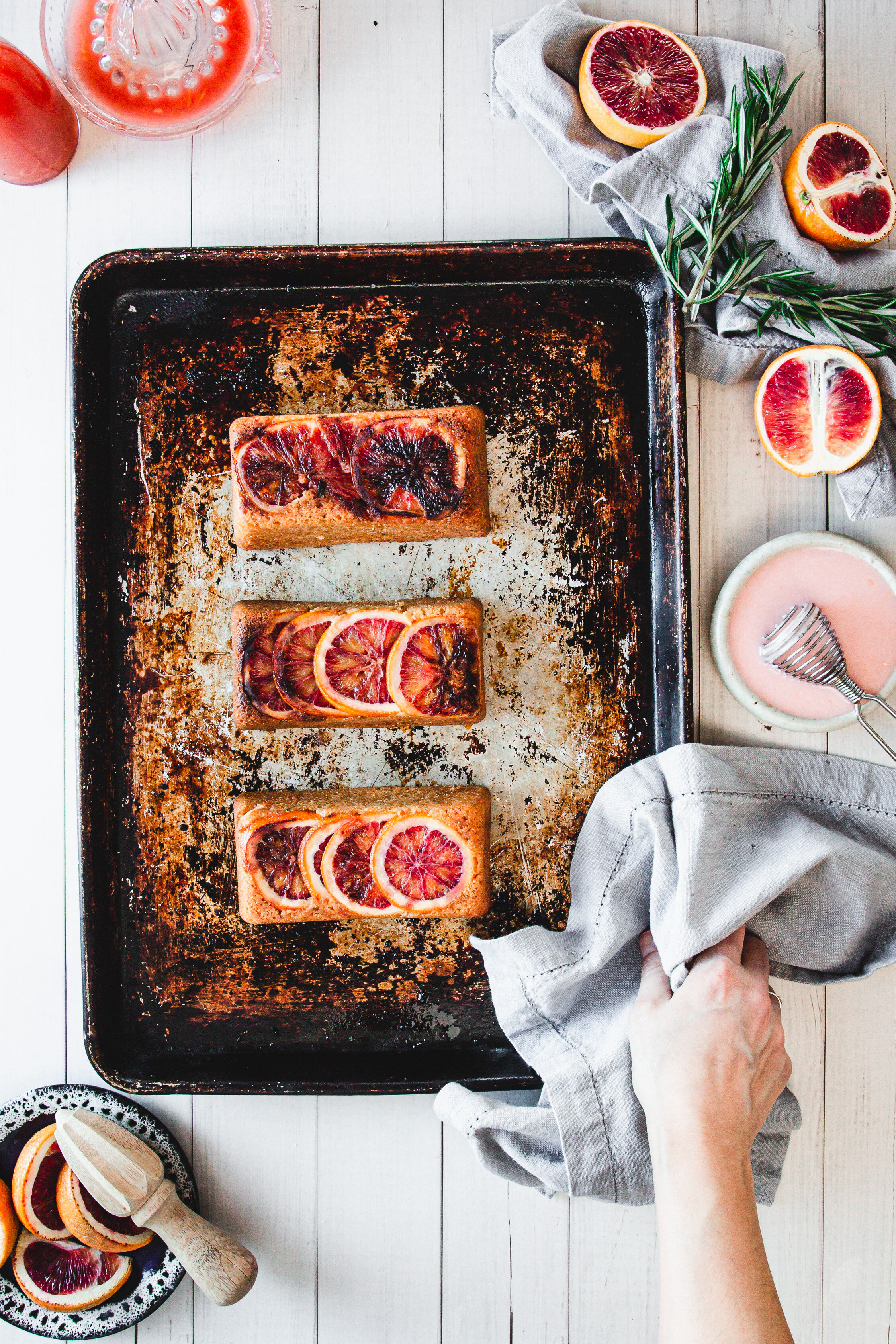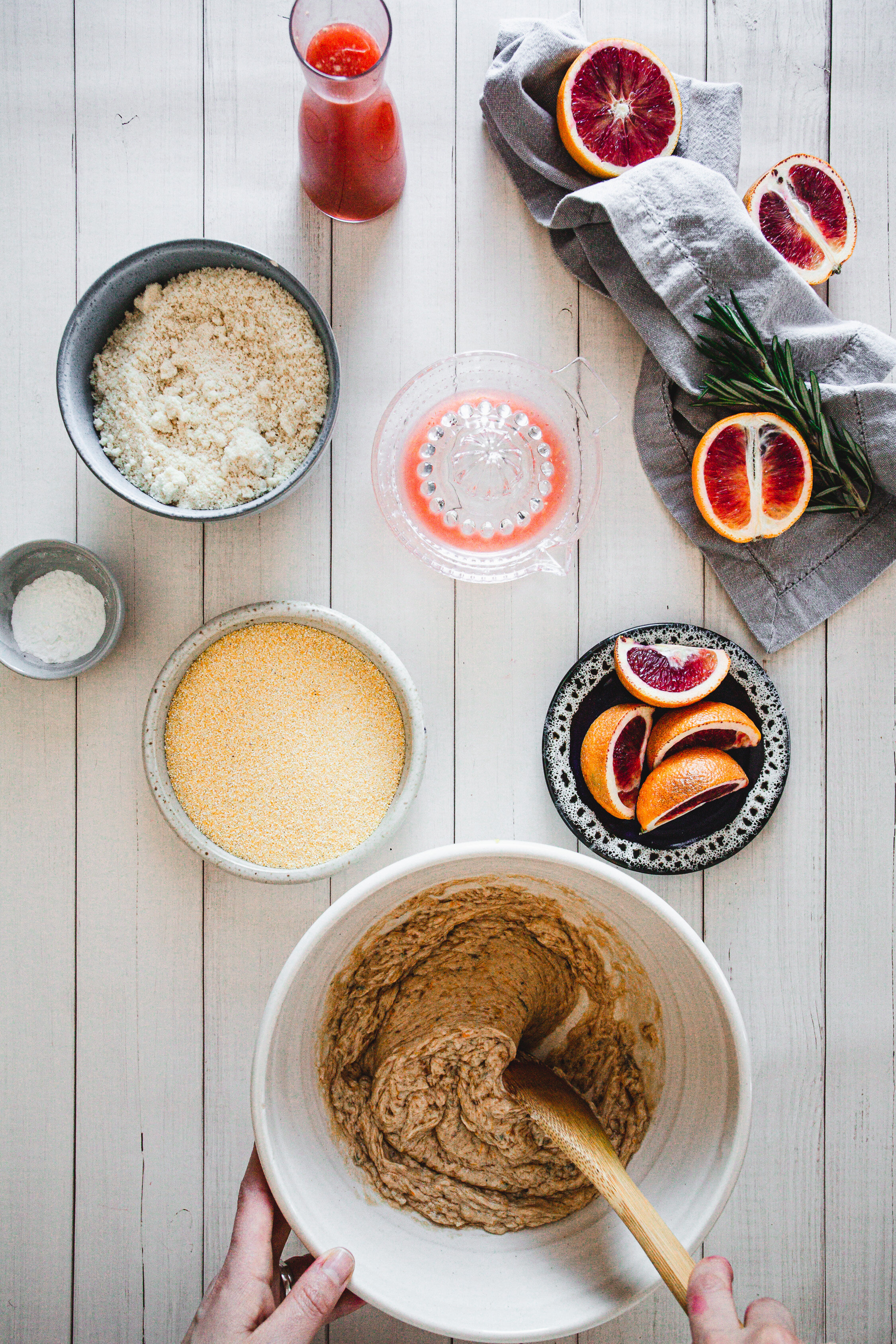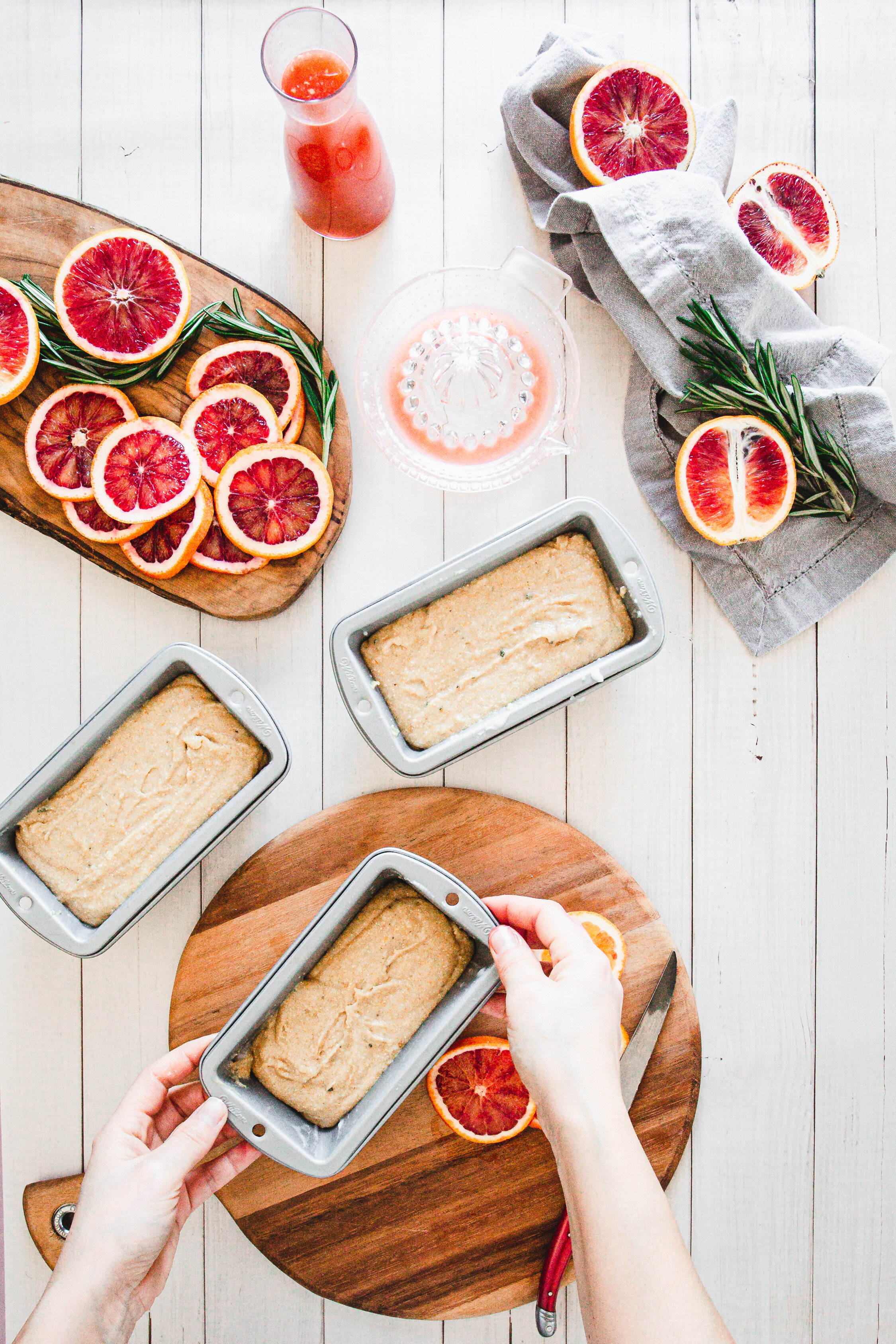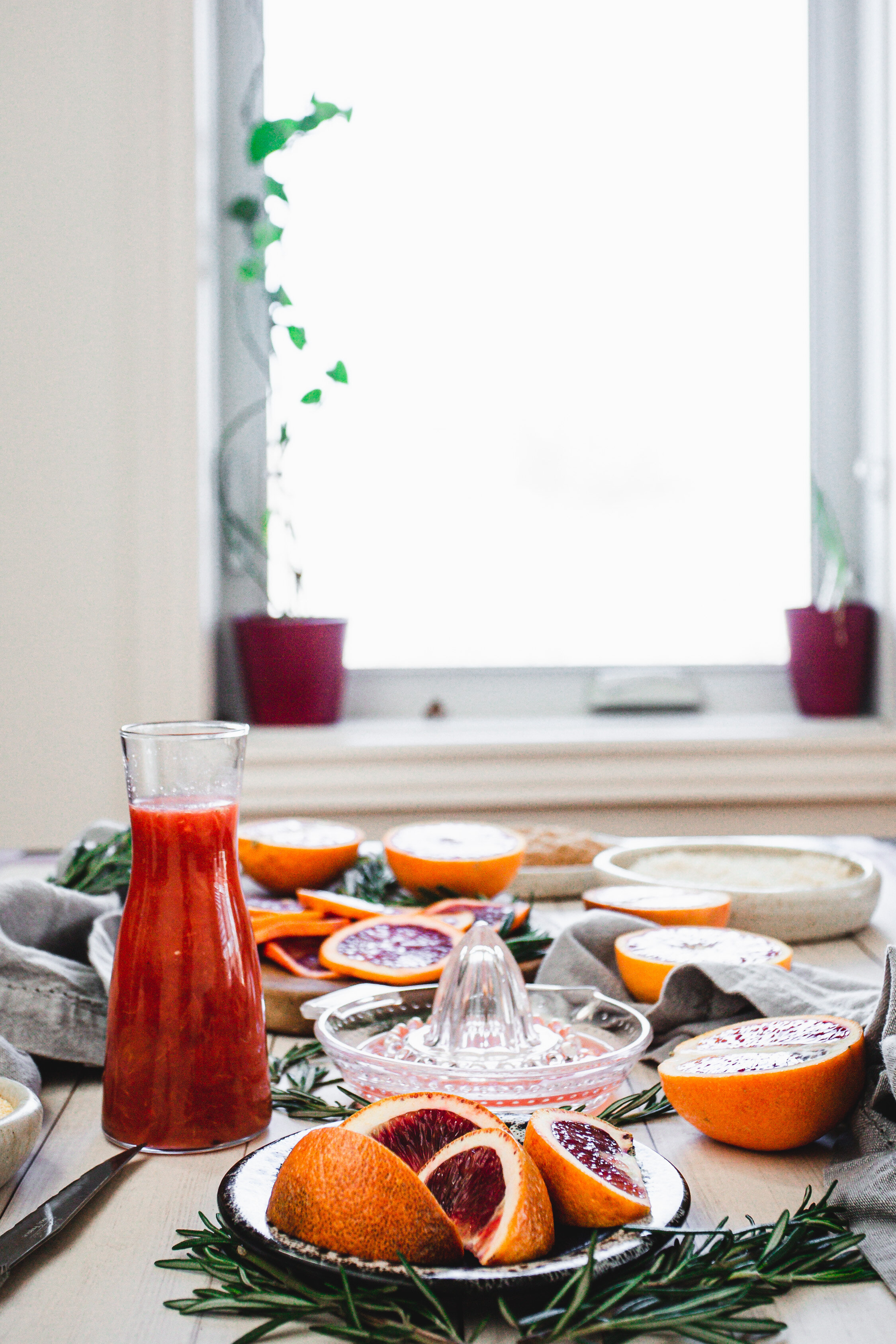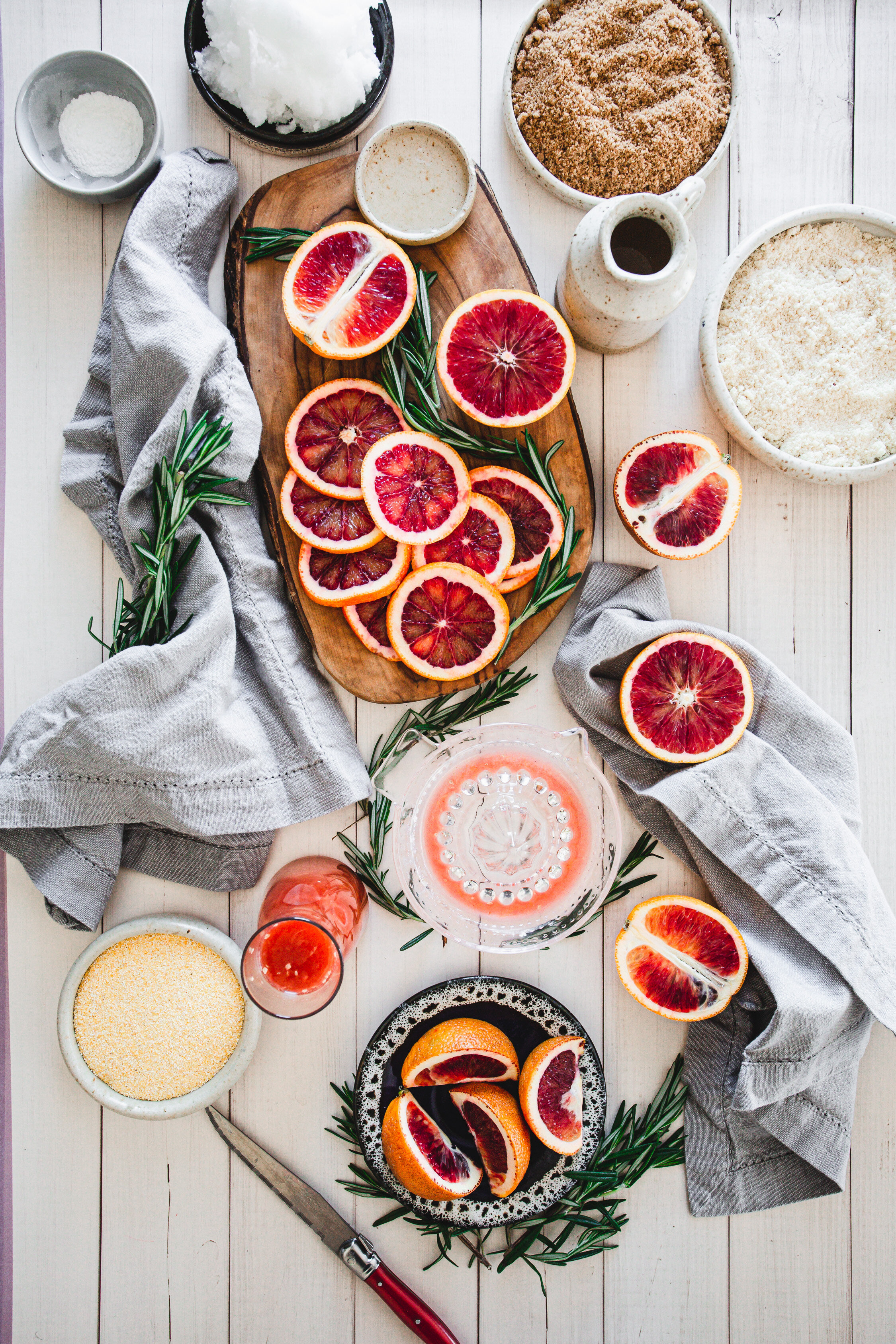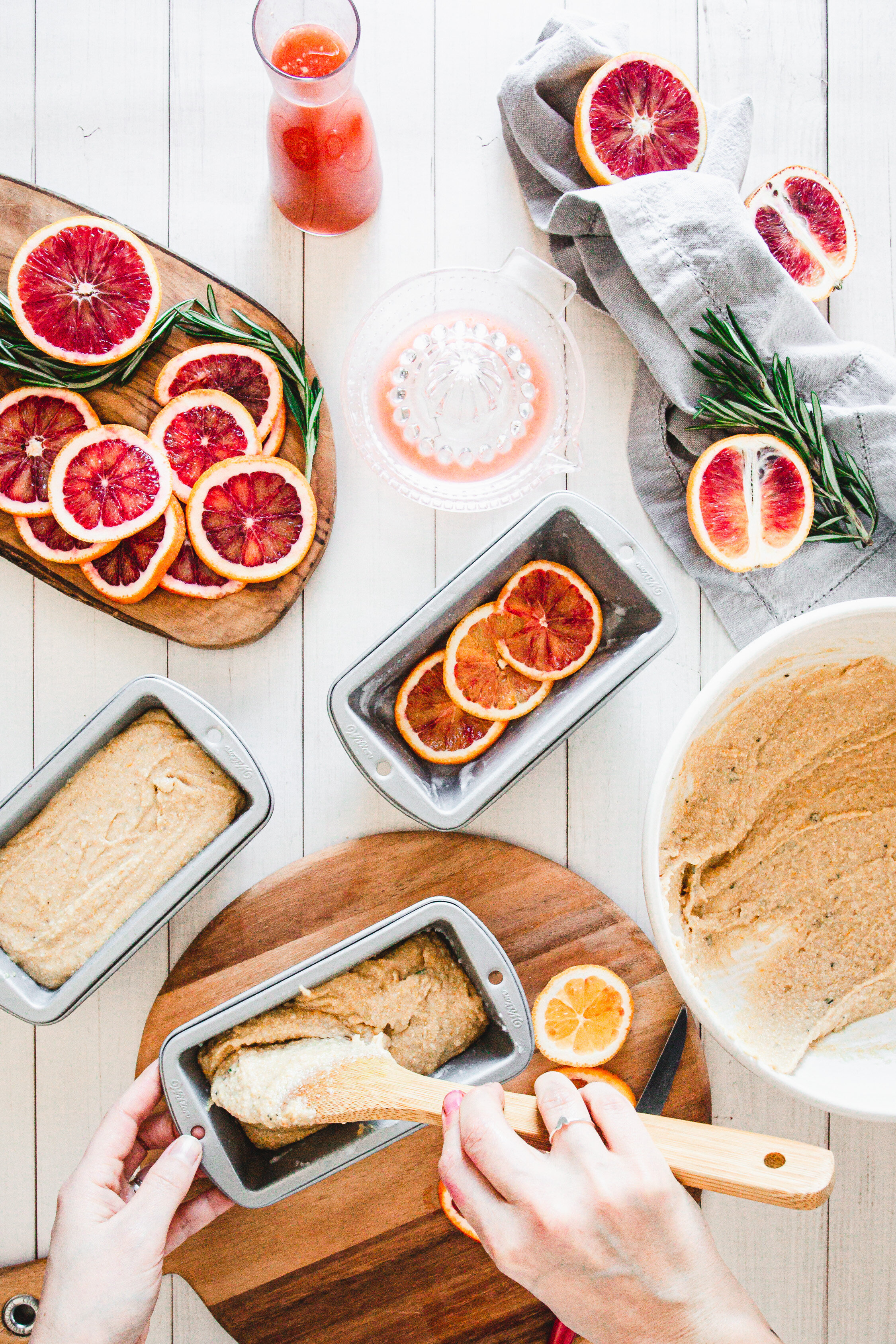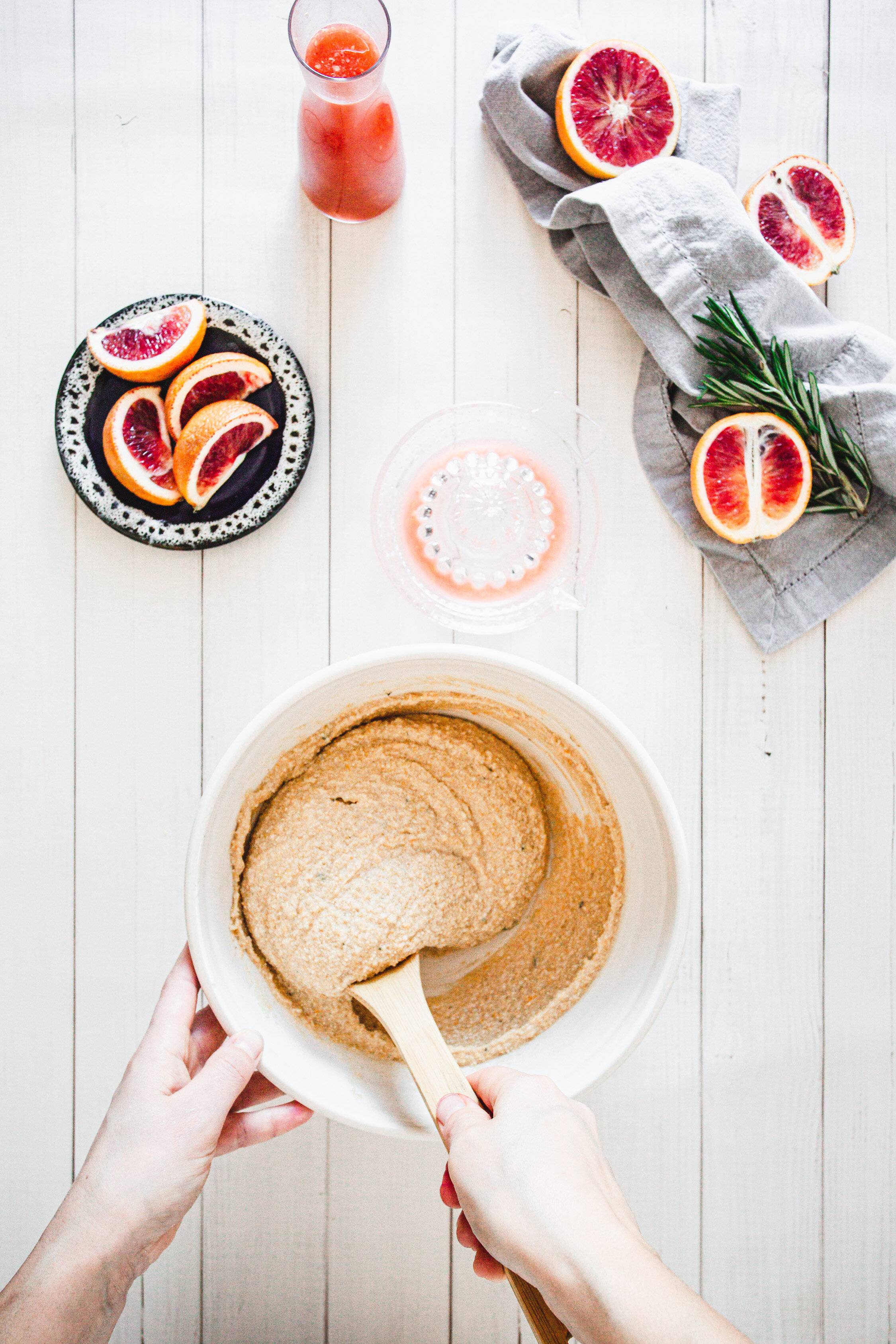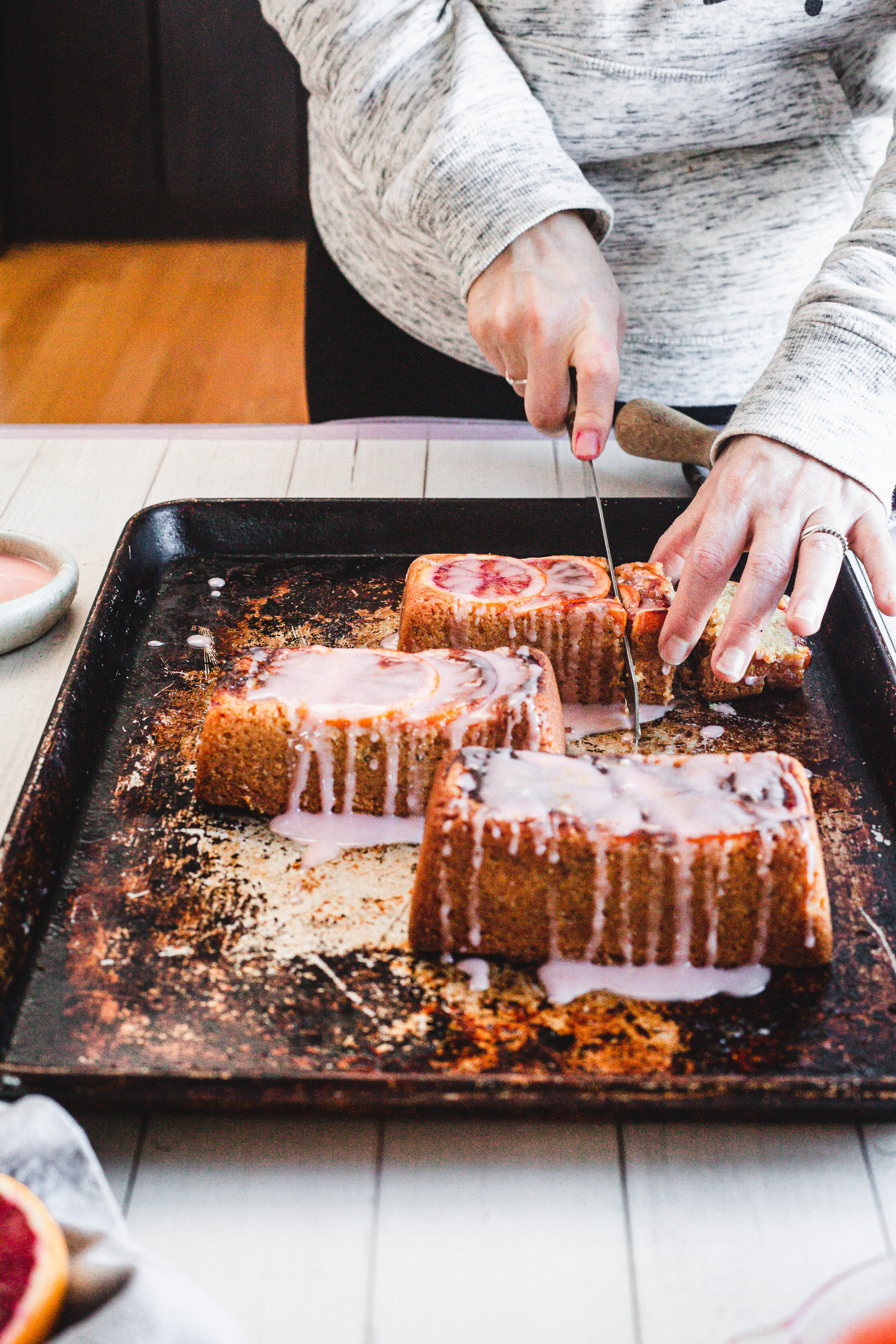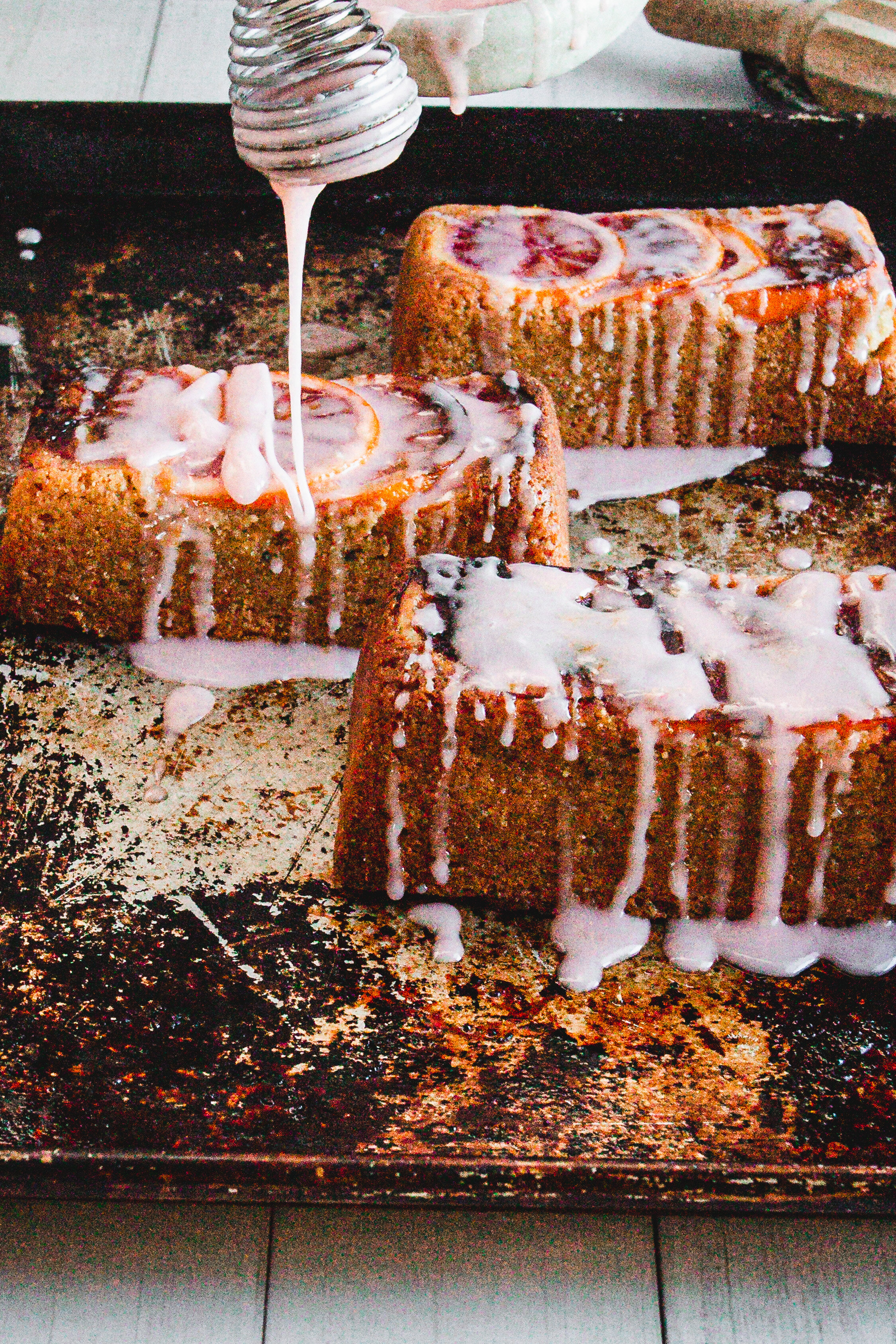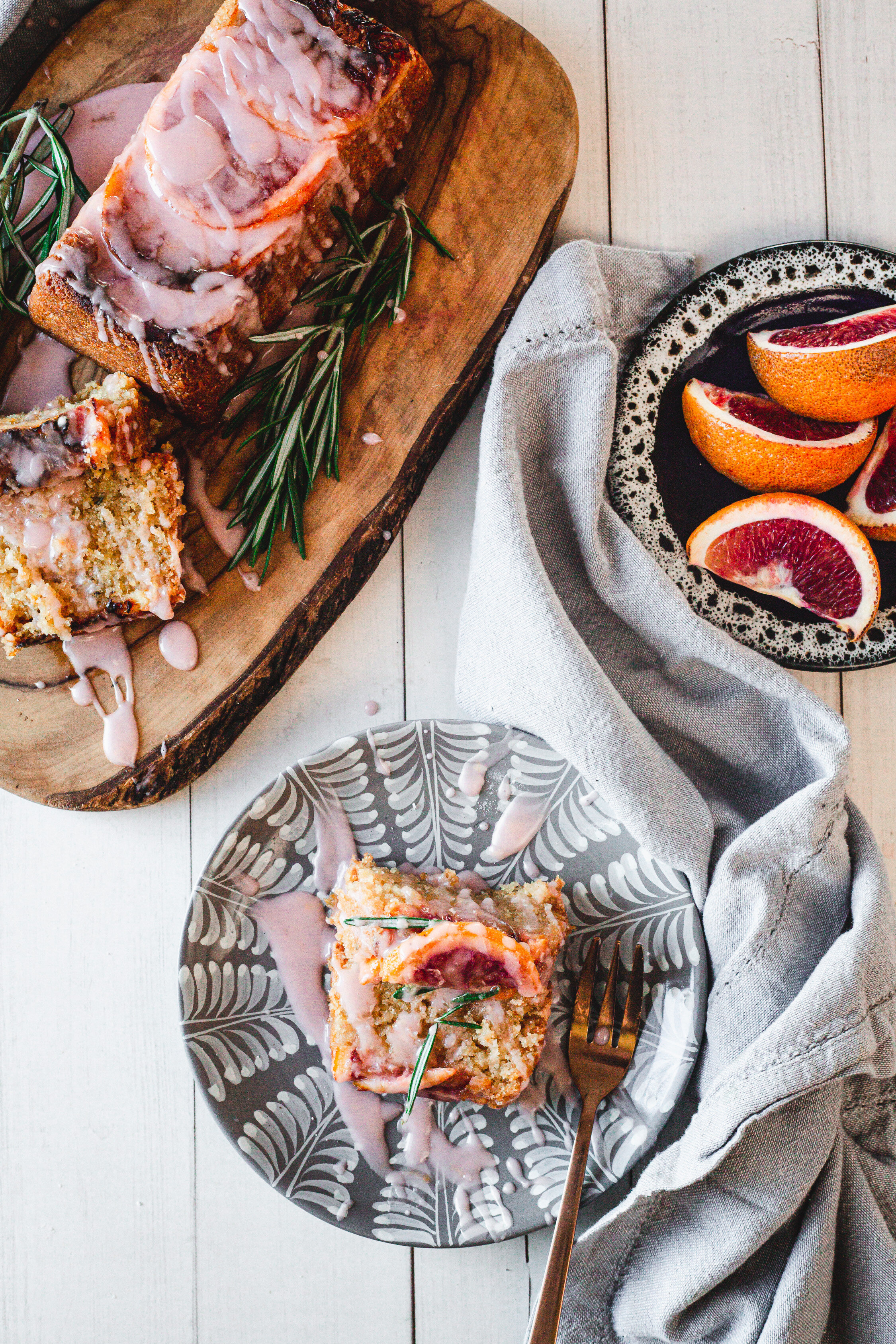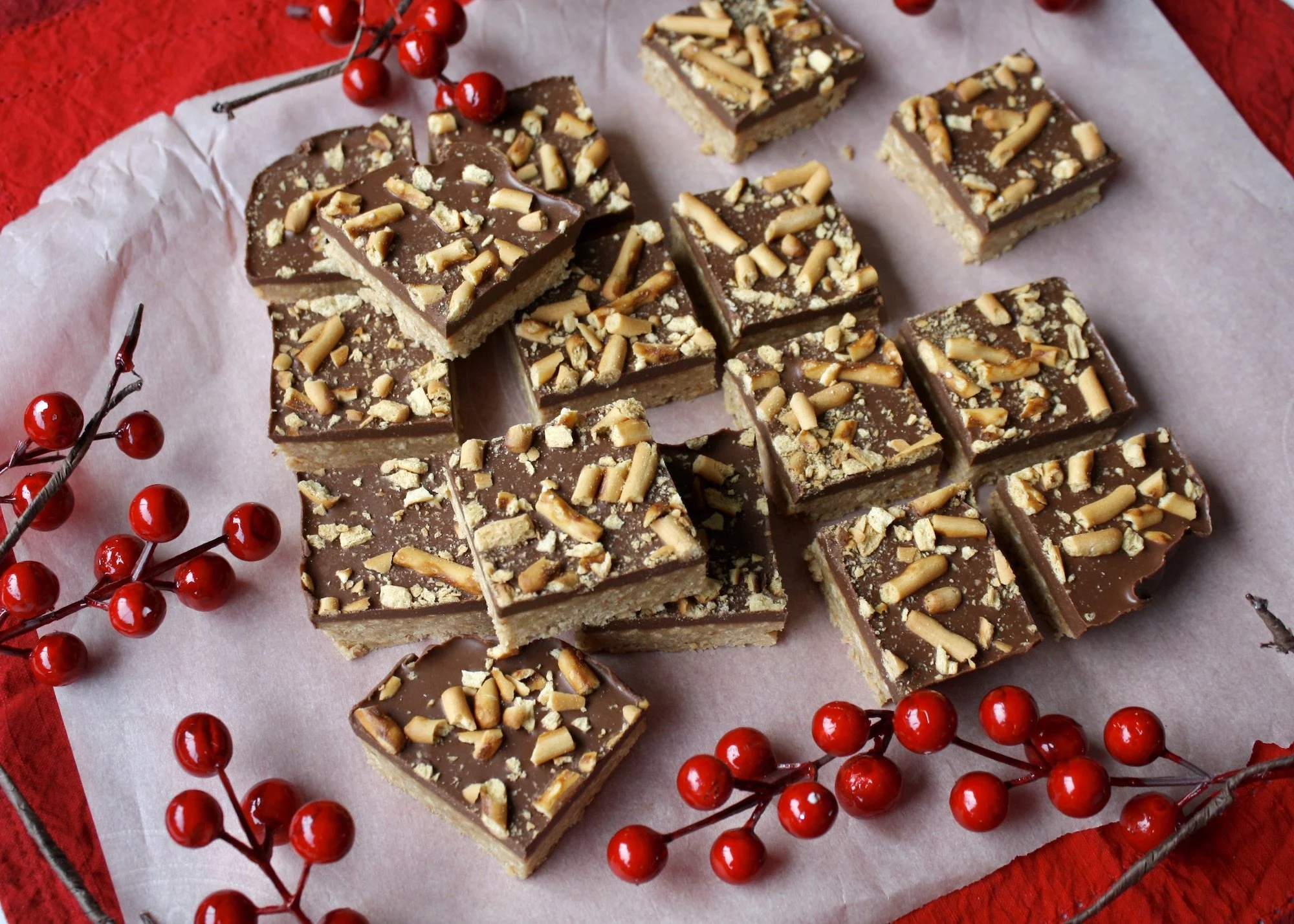Rosemary Blood Orange Polenta Cake
By Ksenia Prints of At the Immigrant’s Table
Rosemary blood orange polenta cake is a fragrant, feminine dessert that smells like a forest in winter and is ripe with the pink blush of blood oranges. Winter is a time when things seem frozen - the earth is hibernating, and so we feel the urge to curl up among the blankets with a good cup of tea and a slice of cake.
Enter this blood orange polenta cake, laced with the fragrance of rosemary and orange blossoms. It’s perfectly juicy, like a beautiful fruit fresh off the tree, and tinged with the magical pink glaze made of sugared blood oranges.
Blood oranges originate in Sicily and Spain, where they are grown in winter under precise growing conditions that allow for that perfect ruby red hue to develop naturally. At the time when all seems to be sleeping, the blood orange has its season in the sun.
Each blood orange is completely different, with the concentration of red in its flesh varying depending on the growing conditions and the region. Some blood oranges are tinged red on the outside, while others reveal their unique nature only once you cut into the fruit. All are entirely unique, and available in the Northern hemisphere only during the winter.
In this cake, we rely on the natural juiciness and the colour of the blood orange to give the glaze its gem-like pink hue. Coarse polenta and ground almonds give the cake its texture. But we turn to another aromatic altogether - rosemary - to give the cake a certain fragrant quality unlike any other.
Reminiscent of the pine trees of our forests, rosemary brings this wintery cake a magical shine and smell.
And thus, precisely at a time when we want to rest and gather our energies, rosemary blood orange polenta cake is the perfect cake with which to welcome in the winter.
Rosemary Blood Orange Polenta Cake
Servings: 9-12
Ingredients:
For rosemary blood orange polenta cake:
100g brown sugar
80g coconut oil, melted
100g olive oil
100g aquafaba (liquid from a can of chickpeas)
1 blood orange, zest and juice
1 tsp orange blossom water
1 Tbsp rosemary, chopped finely
200g almond meal
50g polenta or coarse cornmeal
80g GF flour mix (or regular flour)
1 1/2 tsp baking powder
1 blood orange, sliced (rind and peel included)
Blood orange glaze (optional):
1 ½ cups icing sugar
4 TBs blood orange juice
Equipment:
Standing mixer
3 mini cake pans or 1 loaf pan
Mixing bowl
Measuring cups
Measuring spoons
Directions:
Preheat the oven to 340F. Grease 3 mini cake tins or 1 large loaf pan with coconut oil.
In a large bowl, mix dry ingredients: almond meal, polenta, flour and baking powder.
In a standing mixer set to a high speed (6-8), beat aquafaba until stiff peaks are formed (about 10 mins). Add brown sugar and beat until a meringue texture is achieved, another 5 mins.
In another bowl, mix together olive oil, melted coconut oil, orange zest and juice, orange blossom water and rosemary.
Add oil mixture to dry ingredients and stir to combine. Gently fold in aquafaba until just combined.
Arrange 4 blood orange slices in the bottom of each mini baking tin, or 12-16 orange slices along the bottom of the cake. It’s ok for them to overlap.
Pour batter into the cake tins.
Bake cake tins at 340F for 35-45 minutes. Remove, and let cake cool in tins completely before attempting to invert it.
Prepare glaze: Pour icing sugar into a large bowl. Gradually add in blood orange juice, one tablespoon at a time, mixing throughout until a pink glaze is achieved.
When ready to invert cake, run a knife along the edges of the baking tins. Cover cake pans with a plate or a cutting board, and turn cake over. Tap the bottom of the cake tins a couple of times, and then remove cake pan.
Serve cake drizzled with pink blood orange glaze (optional), and topped with additional rosemary sprigs.




